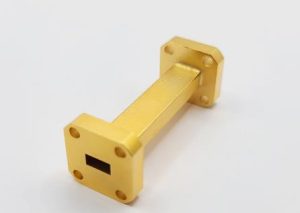Why Is Waveguide Bend Critical in RF Design?
Navigating Physical Constraints
In the complex architecture of radio frequency (RF) systems, space optimization and component arrangement play critical roles. Waveguide bends are essential in these scenarios, allowing RF signals to be transmitted efficiently through waveguides in constrained or uniquely shaped environments. Without the ability to bend waveguides, the design of RF systems would be severely limited, confined to straight paths that are often impractical in compact or densely packed electronics like satellites, radar systems, and mobile communication base stations.

Preserving Signal Integrity
Minimizing Signal Loss
A well-designed waveguide bend is critical for minimizing signal loss. In ideal conditions, a waveguide bend can maintain most of the signal's strength, with typical losses ranging from 0.1 dB to 0.5 dB, depending on the bend's radius and the frequency of the signal. Smaller bend radii can cause greater signal degradation, which is why precision in design and implementation is crucial.
Reducing Reflection and Standing Waves
Reflections and standing waves are significant issues in RF system performance, potentially leading to signal interference and power loss. Effective waveguide bending helps to reduce these problems by maintaining a smooth transition of the electromagnetic wave through the bend. Properly engineered bends ensure that the wave's impedance matches throughout the waveguide, thereby reducing reflection back toward the source.
Enhancing System Performance
Facilitating Complex Layouts
The ability to implement waveguide bends effectively expands the designer's toolkit, allowing for more complex and intricate layouts that can fit into tight spaces without compromising performance. This flexibility is particularly important in systems where size and shape are constrained by external factors, such as in aerospace and automotive applications.
Allowing Scalability and Upgrades
Flexible system design, facilitated by waveguide bends, also allows for easier scalability and future upgrades. As technology advances and system requirements grow, the ability to reconfigure and expand RF systems without extensive redesign is a significant advantage. Waveguide bends play a key role in this adaptability, providing the means to reroute and extend existing systems efficiently.
Material and Fabrication Considerations
Choosing the Right Materials
The choice of material for constructing waveguide bends impacts both their performance and longevity. Common materials include copper, brass, and aluminum, which offer an excellent balance between conductivity, mechanical strength, and ease of fabrication. Advanced alloys and plating techniques can also be used to enhance performance, particularly in high-power or high-frequency applications.
Advanced Manufacturing Techniques
Manufacturing techniques such as CNC machining and precision casting are often employed to produce waveguide bends with high accuracy. These methods ensure that the bends have smooth internal surfaces and precise dimensions, which are essential for minimizing signal losses and avoiding any discontinuities in the waveguide.
Conclusion
In the design of RF systems, waveguide bends are more than just a convenience; they are a critical component that significantly impacts system performance. By allowing RF systems to navigate physical constraints, preserve signal integrity, and enhance overall system design, waveguide bends prove their indispensable value in the field of RF engineering. Their role in facilitating innovative and effective RF solutions underscores the importance of precision in their design and implementation.